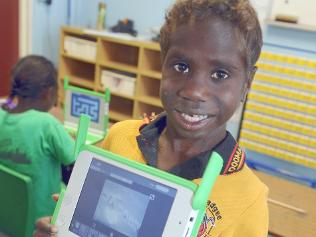Technology is advancing on a daily basis and many students can’t seem to get enough of it. At the same time, students are disengaging from learning in classrooms. What steps do schools need to take to ensure students are kept interested in their learning and are being equipped with the skills they will need to be successful members of society?
Being both a teacher and teacher librarian, I see many ways in which integrating mobile media into my teaching can transform the way students learn. The role of a teacher librarian is also transforming and new tools need to be investigated to support the evolving role. I am excited to explore the possibilities mobile media have to offer but I also realise that I have many obstacles to face before I can put all of my ideas into practice. Funding and a resistance to change, tend to be the two biggest obstacles I have faced trying to implement mobile media at my school.
Supporting new ideas with research and evidence from other schools, has recently helped the ICT committee, which I am a part of, make new purchases. Recently, our school purchased 8 Nintendo DS. It took a few years to convince the school to make the purchase but the benefits of their use have been instantly acknowledged. These machines provide a variety of opportunities suited to the students’ individualised needs. They can be used as an extension activity, an opportunity for group or individualised work and as a way to perform ‘brain training’ exercises. Nintendo DS are so versatile that they can be used to assist with reading, problem-solving, puzzles, concentration and behaviour. As outlined by Derek Robertson, of Learning and Teaching Scotland(http://play.tm/news/16839/nintendo-ds-used-in-schools/), "Game-based learning can provide dynamic and culturally relevant contexts that engage, motivate and challenge today’s young learner." Students associate Nintendo DS with the games they play at home and are therefore keen to use the devices at school. I feel that the success I have had with using Nintendo DS in the classroom has inspired me to learn more about the benefits and challenges of using other mobile media, such as Ipods, Kindles and mobile phones, at school.
Our school’s library is very small and access to the internet is not provided. Currently there are 3 old computers for students to use and they frequently break down. There is limited space for more computers so I believe that the school needs to look at other possibilities to support the students’ needs. Unfortunately, I only work one day a week in the library and therefore find it difficult to initiate change as the other teacher librarian has run the library for over 20 years and few changes have occurred in that time. Many of the resources are out of date and students are unable to access anything but the library catalogue from the computers, when they are working. Students are not choosing to use the library to support them when working on assignments. I feel that if I could provide students with Ipads or Kindles to support them when performing research, they may begin to reconnect and transform their opinion of the relevance of the library. The library needs to look at supporting students by providing access to current information through the use of online journals and by providing mobile media that can access these resources. The limited space means that desk top computers are not suitable. Providing learning pathways and a list of suitable sites students can access from the mobile media, will support students in their search for suitable information. Students also enjoy learning from other students and experts around the world, which would become possible with wireless internet connection and Ipads.
The ICT budget is never big enough to support all the purchases the committee wishes to make, so I believe if real change is going to take place, administration and teachers of all year levels will need to analyse current uses of funding and make alterations to support a whole school priority of implementing mobile media resources to support the needs of the students. The students of today are accustomed to having instant access to information and resources and are finding it increasingly difficult to concentrate in classrooms where resources are not keeping up to date with those available to them outside of school. I believe it will be a while before the school is ready to accept the idea of using mobile phones at school but I will start my journey towards increasing the number of mobile media devices available to students at school by advocating for the implementation of more Nintendo DS and Kindles or Ipads for the library. I will present the idea to the administration team and the ICT committee by providing research on the benefits of their use in schools. I will also make information available to teachers in the staffroom so I can get more teachers interested and supportive of the idea. I feel the success of the Nintendo DS has begun to shift people’s views on mobile media and hopefully this will be reflected in the spending of school funds next year.
References
Guttridge, L. (2008). Nintendo DS used in schools: Scottish pupils benefit from DS learning. Play.tm. http://play.tm/news/16839/nintendo-ds-used-in-schools/

